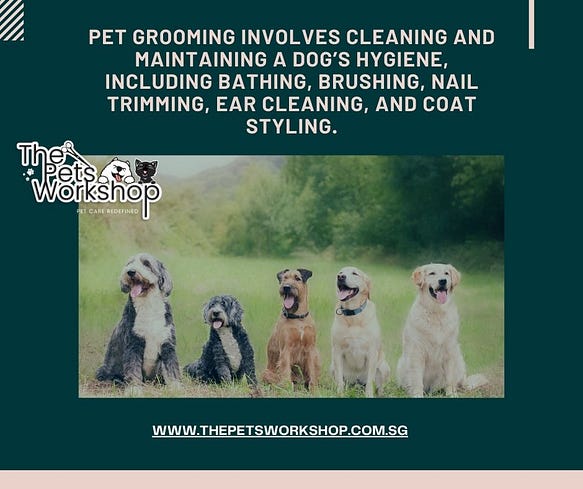Techniques for Calming Anxious or Aggressive Dogs — The Pets Workshop

Understanding the basics of canine behavioral psychology is crucial for professional dog groomers in Singapore. Dogs, like humans, have unique personalities and temperaments. Their behavior during grooming can be influenced by past experiences, socialization, breed characteristics, and individual temperament. Recognizing signs of anxiety, fear, aggression, or stress is the first step in handling difficult dogs. Common indicators include growling, snapping, cowering, excessive panting, and avoidance behaviors. Knowledge of behavioral psychology enables groomers to approach each dog with empathy and tailored techniques that promote a positive grooming experience.
Techniques for Calming Anxious or Aggressive Dogs
Positive Reinforcement: Rewarding good behavior with treats, praise, or petting can build trust and encourage cooperation. Consistent positive reinforcement can help reshape a dog’s association with grooming from negative to positive.
Desensitization and Counter-Conditioning: Gradually exposing a dog to grooming tools and procedures while pairing these exposures with positive experiences can reduce fear. For example, letting a dog sniff the clippers while offering treats can help it associate the tool with something pleasant.
Calm Environment: Creating a serene grooming environment is essential. Soft music, gentle handling, and a quiet setting can significantly reduce a dog’s stress levels. Avoid sudden movements and loud noises that might startle the dog.
Proper Handling Techniques: Learning safe and effective handling techniques is vital. Using gentle restraint methods, like holding a dog in a comfortable position without causing distress, can prevent injuries and calm the dog. Tools like grooming loops and no-slip mats can aid in safely securing the dog.
Regular Breaks: Giving the dog short breaks during the grooming session can prevent overwhelm and reduce stress. These breaks allow the dog to relax and regain composure before continuing.
Safety Tips for Groomers
Reading Body Language: Being able to read a dog’s body language is crucial for safety. Recognizing signs of discomfort or impending aggression can help dog groomers intervene before a situation escalates.
Protective Gear: Wearing protective gear such as gloves and long sleeves can prevent bites and scratches. Using muzzles or head halters may be necessary for particularly aggressive dogs, always ensuring they are used humanely and appropriately.
Training and Education: Continuous education on handling techniques and canine behavior is essential. Attending workshops, seminars, and courses can keep groomers updated on the best practices for managing difficult dogs.
Building Trust and Rapport
Establishing a trusting relationship with both the dog and its owner is essential. Communicating openly with the owner about the dog’s behavior and working together on strategies can improve the pet grooming experience over time. Building rapport with the dog through consistent, positive interactions helps in creating a sense of safety and
predictability.
Handling difficult dogs requires a blend of behavioral knowledge, practical techniques, and patience. By understanding canine psychology and employing compassionate handling methods, professional pet grooming course in Singapore can ensure a safer, more comfortable grooming experience for both the dog and themselves. Continuous learning and adaptation to each dog’s unique needs are key to mastering the art of grooming challenging pets.
Learn More: https://www.thepetsworkshop.com.sg/


Comments
Post a Comment